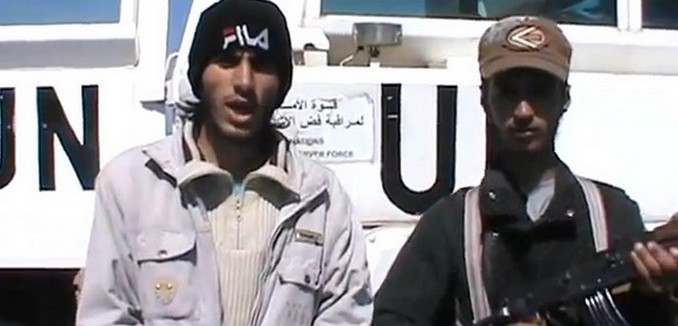The Arab League decided last week to allow its member states to arm the Syrian opposition. Theoretically, until that decision, the League had — at least publicly — limited its members to giving humanitarian aid to the rebels.
This week’s decision may not fundamentally change the nature of the Syrian conflict. Saudi Arabia and Qatar are already funding the opposition, and militias fighting Bashar al-Assad have not in any case been suffering from a lack of ordnance. Ample weaponry has streamed in for months from Libya.
Still, this symbolic step represents an achievement for the rebels, who are battling a Syrian regular army that has the benefit of Russian weaponry and Iranian training.
From Israel’s perspective, the news from the Arab League is not particularly encouraging.
The weapons now given to the Syrian opposition are likely to be turned against the Jewish state in the not-too-distant future. The Israelis fear that there is no party or actor on the Syrian side of the Golan Heights whom it sees as a sensible or moderate decision-maker. Some areas of the Syrian Golan — particularly its southern parts — are controlled by armed gangs opposed to Assad. As The Tower highlighted last week, some are radical Al Qaeda-linked Islamists who have been spotted surveying Israeli troop movements.
Meanwhile, the general security situation in the area is deteriorating. A video clip circulated this week on YouTube showing the capture of U.N. monitors on the Golan Heights neatly captures the Syrian opposition’s current situation, and the growing threat to regional stability, as well as Israel, that will come with the “Day After” the fall of Syrian ruler Bashar al-Assad.
In the clip, a speaker identifying his group as the “Yarmouk Martyrs Brigades” haltingly demands the withdrawal of Syrian forces from the village of Jamla, in the southern part of the Syrian-held Golan Heights. “If they don’t withdraw within 24 hours,” he says, apparently figuring out what to say next, “we’ll decide how to treat these captives.”
“We demand from America and the U.N. Security Council to bring about a withdrawal from Bashar al-Assad’s forces from Jamla,” the fighter says, as if Assad’s forces care what the Security Council has to say.
The following day, an additional clip hit the Internet, this one vowing that the hostages would soon be freed. In it, a Filipino U.N. monitor says he and his comrades were being held in a safe place, and that the hostage-takers (though of course he didn’t use that word) had simply tried to help them avoid getting caught in a crossfire. The Filipino monitor said the captives were getting good treatment, including adequate food and water.
Why, then, were the U.N. monitors taken captive? Likely because they were an easy target.
In fact the continued activity of UNDOF – the U.N. observer force stationed between Israel and Syria – is also not something to be taken for granted. The monitors have recently found themselves more than once in the Syrian crossfire, but this week’s incident was the first time an armed group had deliberately targeted the international force. Some of UNDOF troops’ mother countries are rethinking their participation.
[Photo: syriahro / YouTube]




